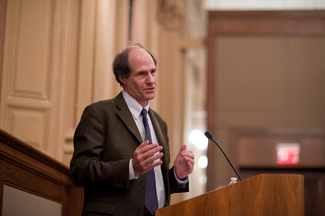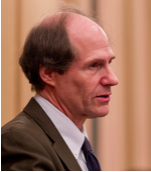
Former administrator offers an overview of OIRA’s internal processes.
My three quasi-ideas—drawn from Felix Frankfurter, John Stuart Mill, and Friedrich Hayek—are a framework for my reflection on the myths and realities of OIRA, based on my time as OIRA Administrator. Now, here are four facts that I am going to tell you right now and then elaborate on a little bit. Each of them, I think, is inconsistent with widely-held views in the academic world, and certainly in the world of Washington and New York observers of the regulatory process. These four points are meant as correctives to myths.
Point number one: OIRA helps to oversee a genuinely inter-agency process involving lots of specialists throughout the federal government. I want to put that in italics, because the process is often referred to as only “OIRA Review.” A very good professor at another Ivy League institution said to me recently, “How can OIRA review thousands of rules? Surely, this is slipshod, or political, or something.” What he’s missing is that the people who are reviewing the rules are predominantly outside of OIRA. There will be a rule from the Environmental Protection Agency that might affect the agricultural sector. The Department of Agriculture is going to be all over that rule, trying to find out what the consequences are going to be for the agricultural sector. There will be a rule from the Department of Transportation that will have environmental implications. The EPA is going to be closely assessing that rule for bad environmental effects. There will be a rule from, let’s say, the Department of Interior that depends on some scientific understandings. The Office of Science and Technology policy within the White House will be scrutinizing that rule and adding such information as it has.
OIRA’s goal is often to identify and convey inter-agency reviews to try to seek a reasonable consensus. It’s operating as a conveyor and a convener.
Point number two: When a proposed or final rule is delayed—which happens, and close observers know it happens not infrequently—and when the OIRA process proves very time consuming, it’s often because a significant inter-agency concern hasn’t been addressed, so there is not yet consensus within the administration about going forward.
I don’t want to talk about particular rules because that would be violating a deliberative privilege. But if you go through what’s happened in the last few years, you will find some rules that were held up for a long time. If they were held up, it’s because somebody who matters had a reasonable concern that just had to be addressed. One possibility, which really mattered to me, is if there is a legal concern on the part of smart lawyers that a rule is transgressing a statute, and the agency that proposes the rule hasn’t been able to satisfy the objections of, let’s say, the Department of Justice, which is a legally authoritative entity within the Executive Branch. OIRA is going to help to work through that issue very carefully. Even to propose a rule that the Department of Justice believes is illegal is a real problem. Sometimes proposed rules can actually create dislocations. And if there is a technical policy problem—let’s suppose it’s not a legal problem, but it’s that the agency hasn’t adequately assessed the effects on small business, which could be very bad—that has to be worked through too. All this suggests that delay is often a process of a time consuming but, in its own way, really inspiring effort to tap the expertise of all the people who are concerned.
Point number three: Costs and benefits are important—the Millian point—and OIRA, along with others, prominently including the Council of Economic Advisors, does focus on them, but they’re usually not the dominant issue in the OIRA process. I had thought, based on comments of outside observers, that OIRA is supposed to be the home of cost-benefit analysis. This isn’t entirely off the mark, in the sense that this President and his predecessors have placed a big emphasis on cost-benefit analysis, but it’s not the daily work. It’s occasional; it’s not the dominant aspect of OIRA life. Most of the time is spent on carefully assessing public comments—that’s the Hayekian point— and ensuring that alternatives are raised and discussed so that, for a proposed rule, the public has a sense of the options and can respond to comments in public. This way, we can be sure we’re not making a mistake that the public anticipated. OIRA also spends substantial time on engaging lawyers throughout the Executive Branch to resolve questions of law. Those aren’t cost-benefit questions; those are quite different questions and they are more central to what happens every day than cost-benefit analysis.




